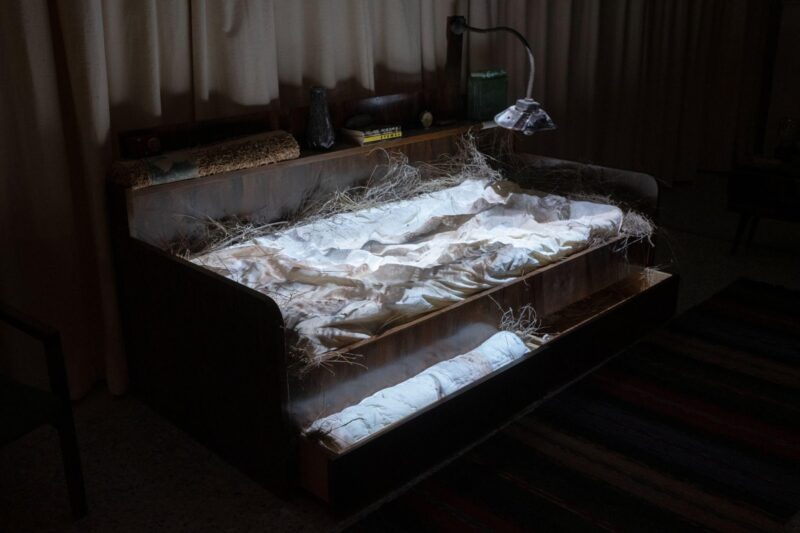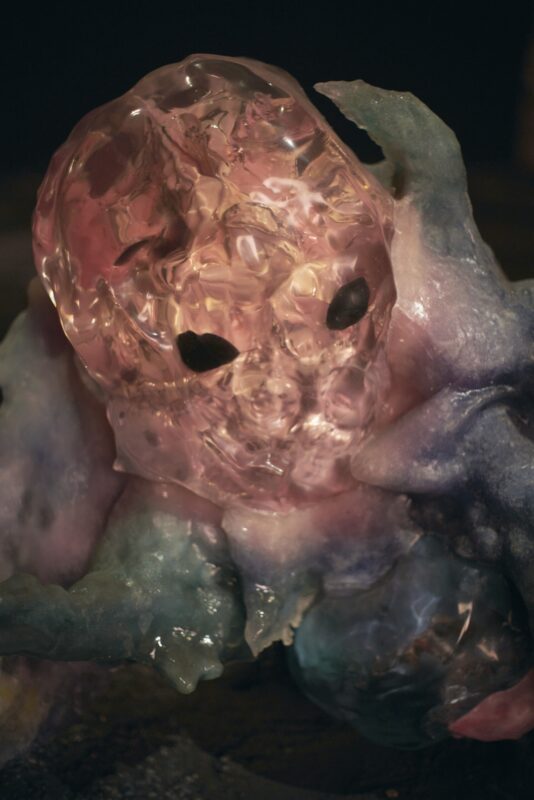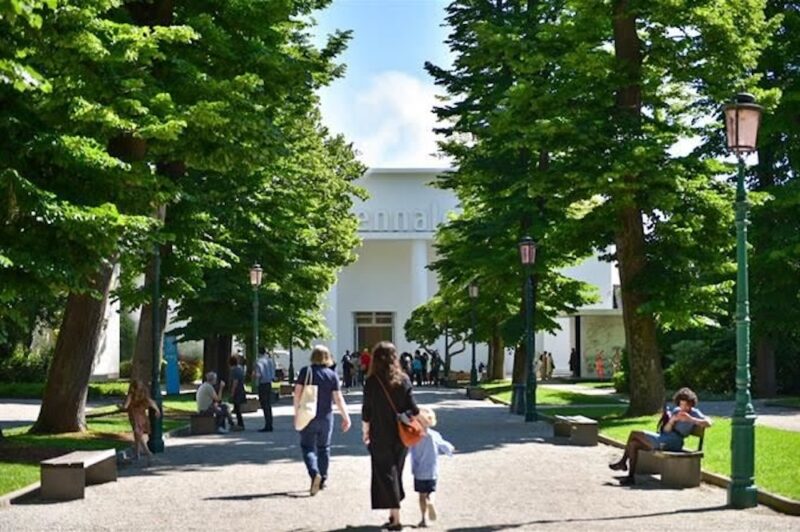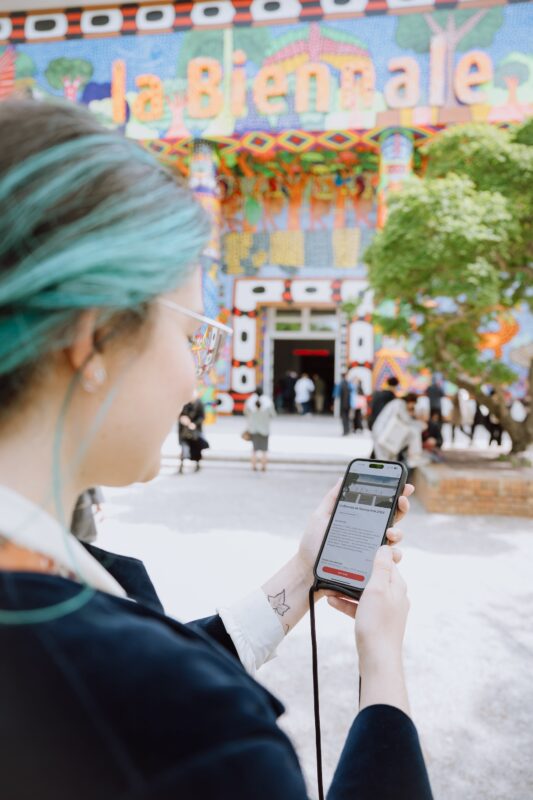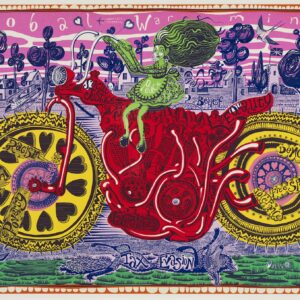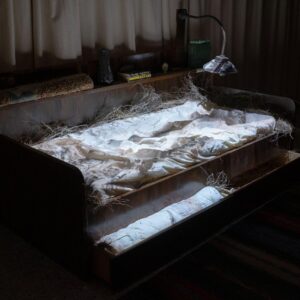Tabish Khan the @LondonArtCritic, takes a break from London to pick his highlights from the two main sites of the Venice Art Biennale – the Giardini and the Arsenale. In part II he’ll cover the off-site pavilions and exhibitions taking place across Venice.
Highlights from the Giardini
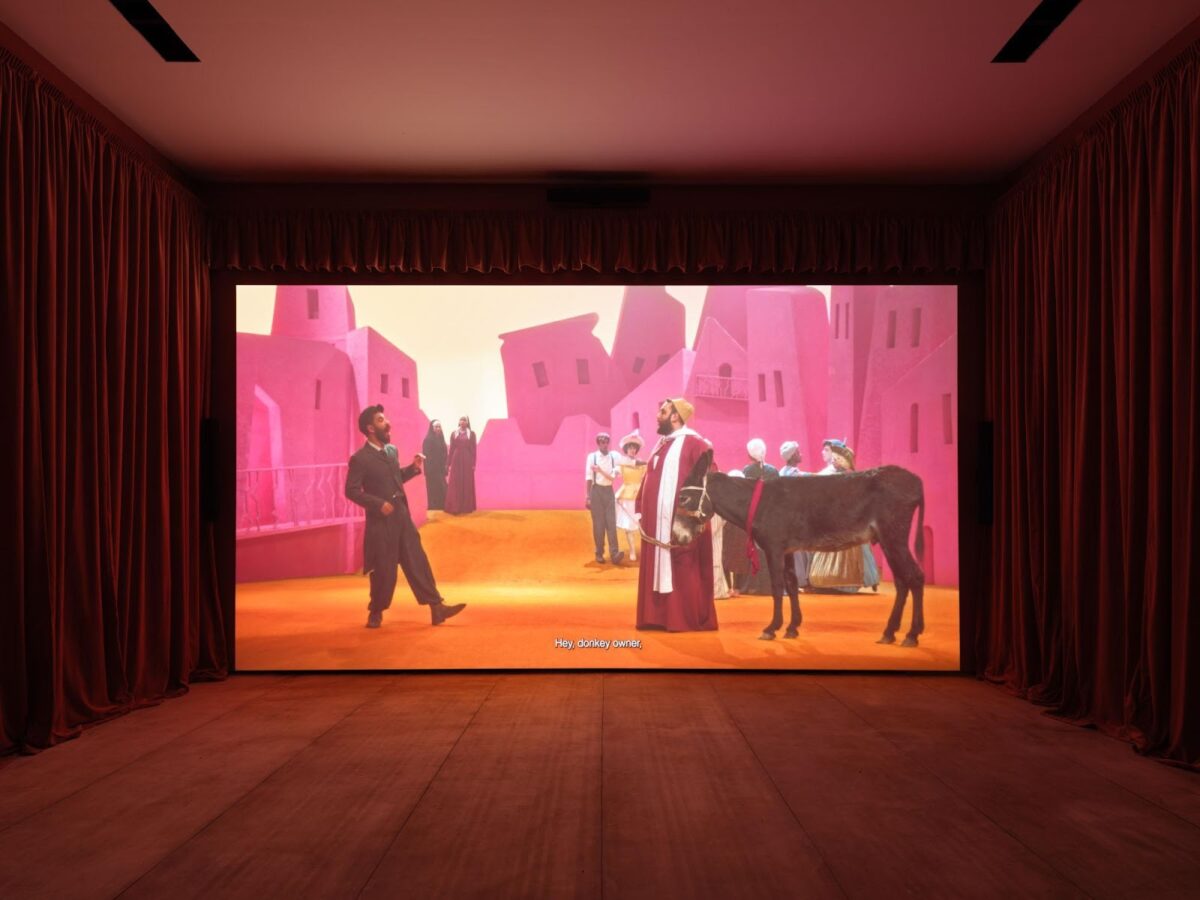
The Giardini is split into two sections with a second set of pavilions separated from those near the entrance by a bridge and this ‘back section’ is where visitors should head to as there are some real gems there.
My favourite pavilion is Wael Shawky for Egypt where it centres around a 45 minute film of a musical theatre production on the Urabi revolution in Egypt against Imperial influence (pictured above). This revolution was crushed by the British bombing of Alexandria, Shawky’s hometown, and the film about it is brilliantly done. I came to it late in the day after seeing lots of art and there was standing room only, and yet I was so captivated I stood for the entire duration.
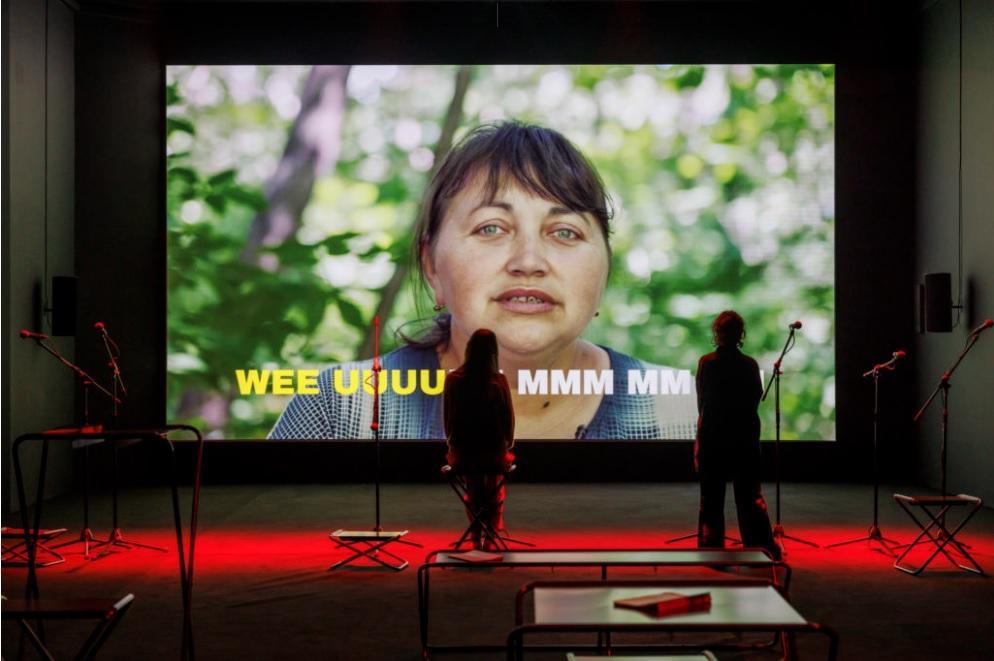
A few doors down is Poland’s powerful pavilion that’s been handed over to a collective from Ukraine, Open Group, that have filmed Ukrainians mimicking the sounds of the weapons of war that they’ve had to endure. Recreating these sounds leads to an intense memory and there are microphones so visitors can also join in making the same sounds – like an extremely dark and powerful karaoke session.
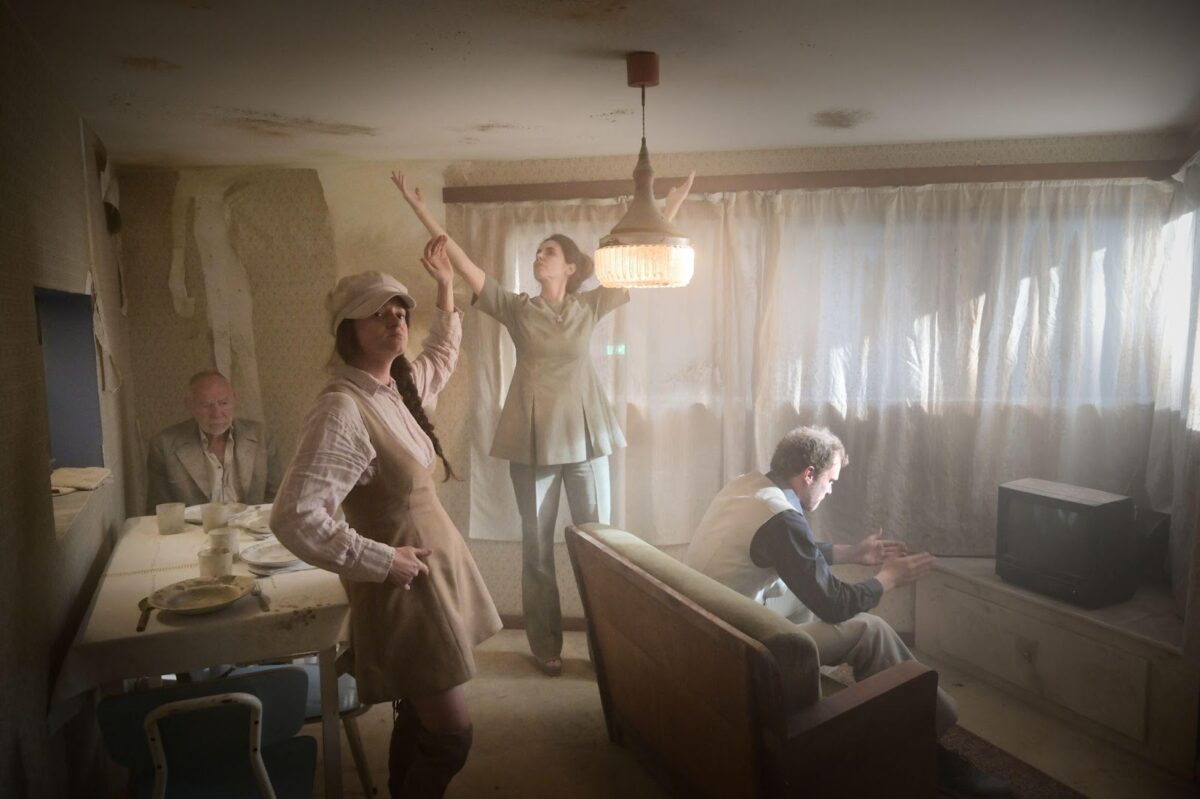
Moving to the front half of the Giardini the German pavilion has created a lot of buzz and has the queues to prove it. After queuing to get in you may wonder what the fuss is about but it’s worth queuing again for the central structure that houses a domestic setting covered in dust and performers within a building that spans three floors. It relates to asbestos and the toxicity of labour, and it’s really intense.
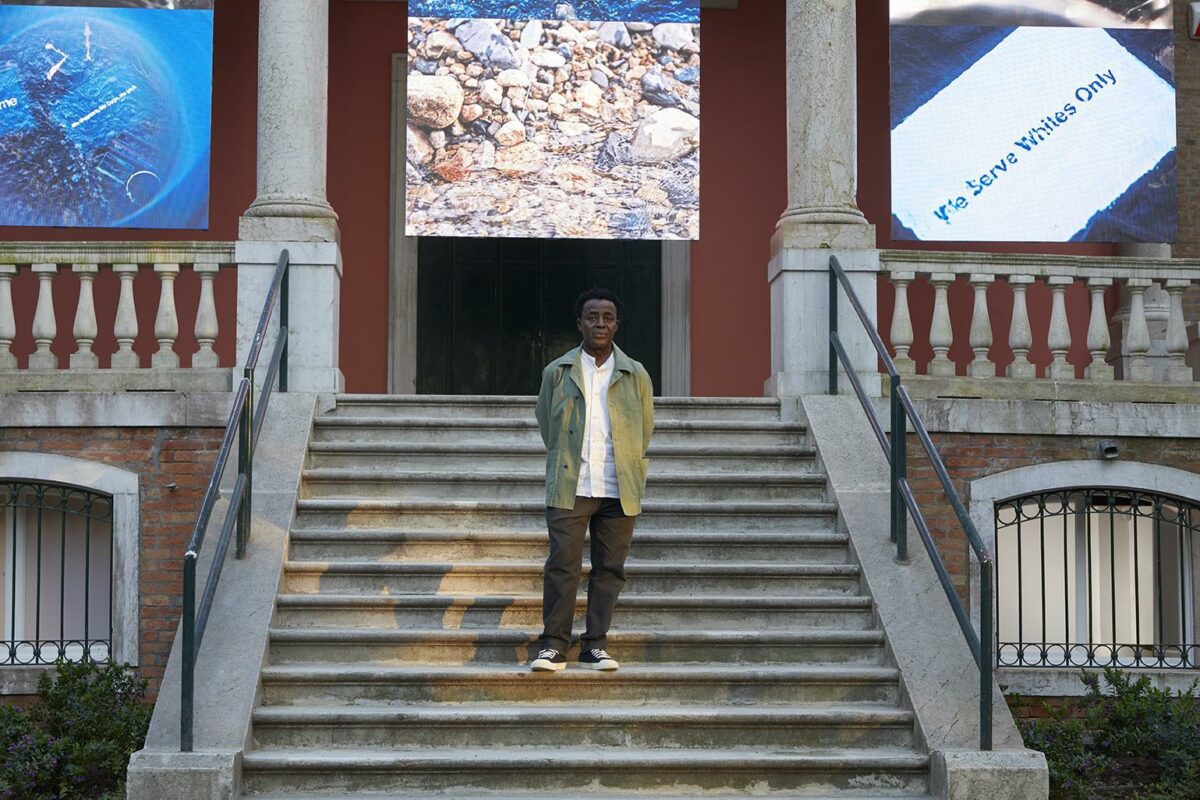
John Akomfrah has done a great job for an immersive walkthrough of films split into eight parts that deals with colonialism and climate change. Despite the heavy topics it’s a subtle installation that pulls you in with beautiful cinematography, rather than hitting us over the head with an important message.
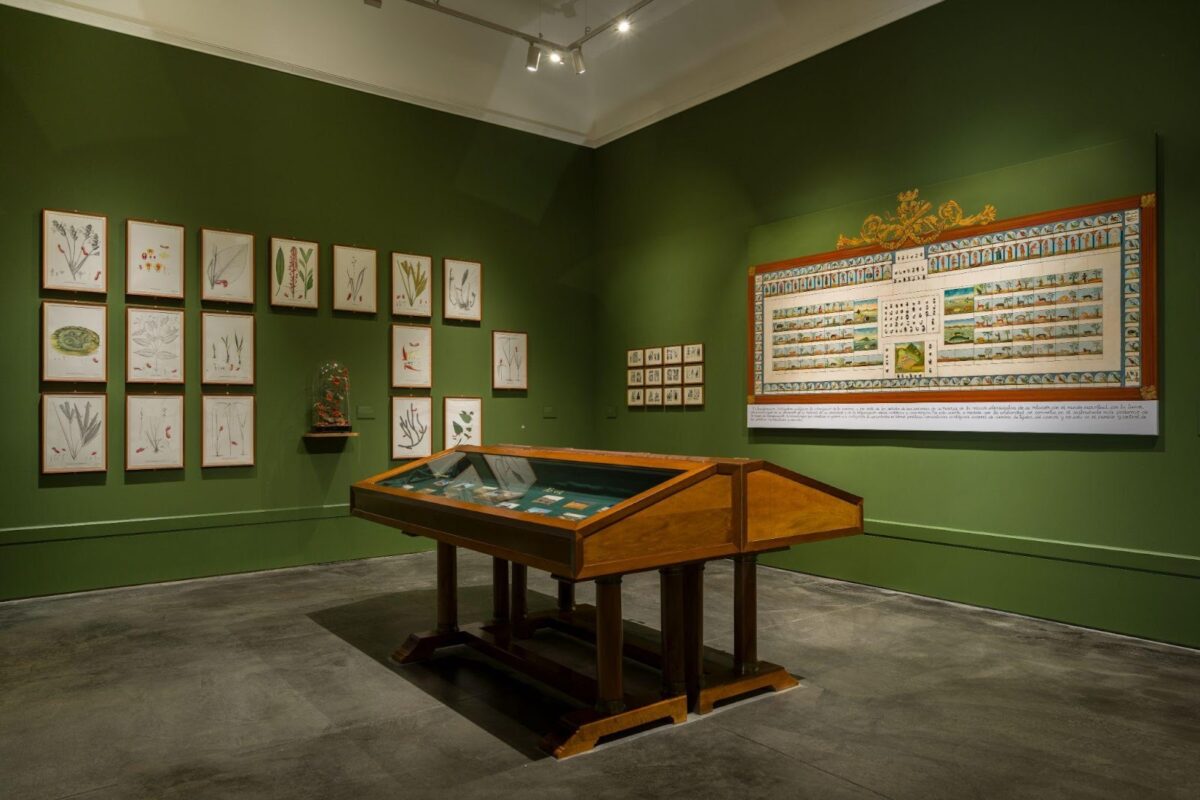
Spain’s pavilion also deals with similar issues but takes an information dense approach on how art and science have been used to further Imperialism and Euro-centric views, in a pavilion that rewards detailed reading.
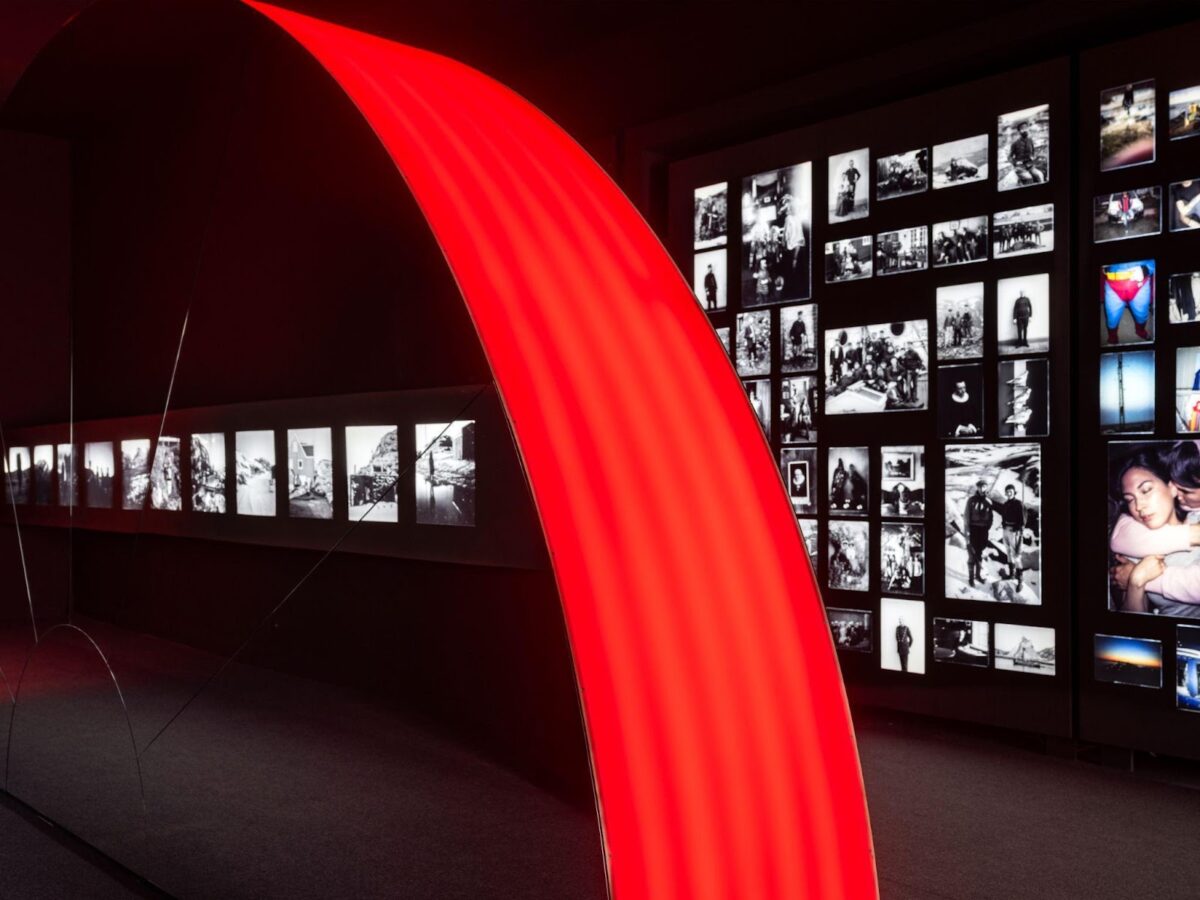
Proving that a simple approach can also be effective, Denmark has rebranded its building the Greenlandic pavilion and turned it over to photos, past and present, of local communities in Greenland in an effective exhibition.
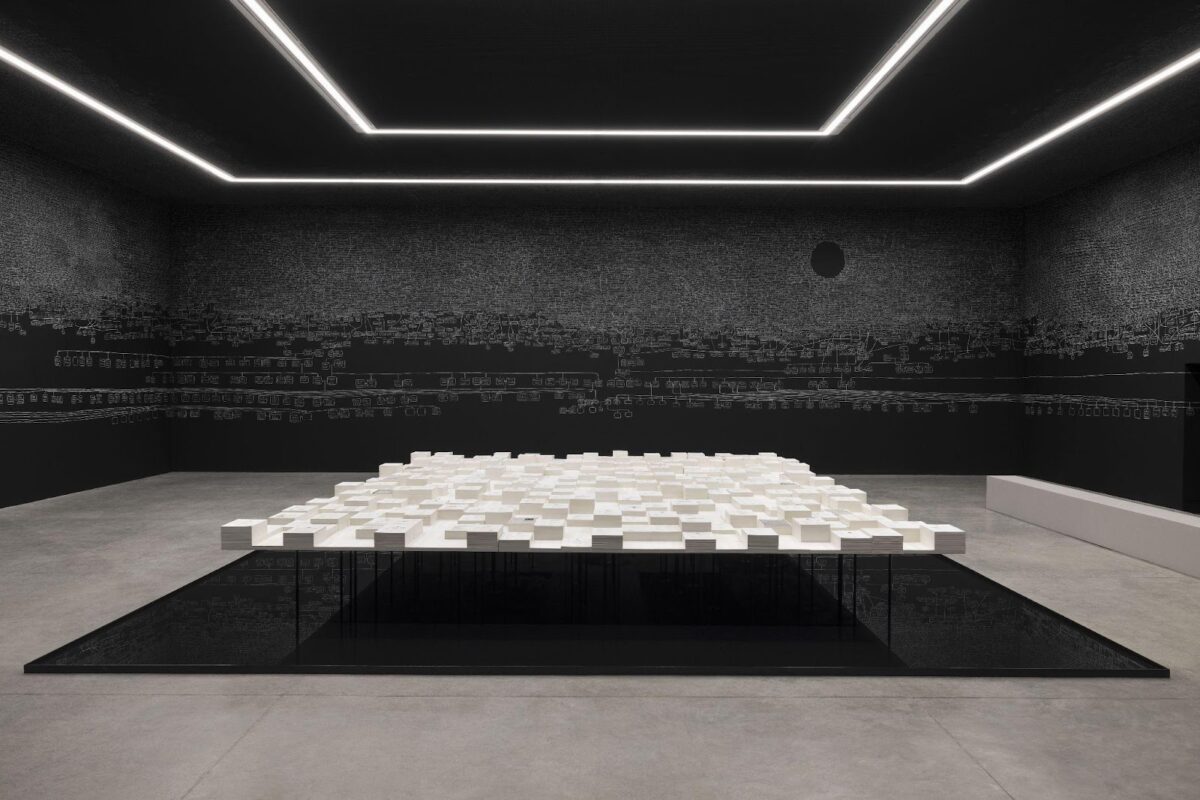
Special mentions should also go to Australia for artist Archie Moore’s research heavy display on Indigenous history. It’s a great concept, and while visually it can be hard to get into and hard going once you do, I can see why it won the Golden Lion – the award for the best pavilion. I did also enjoy the giant dragon’s head outside the Nordic pavilion, Belgium’s folkloric giants and the accompanying thumping soundtrack, and Jeffrey Gibson’s colourful takeover of the US pavilion that probably would have had a bigger impact on me if I hadn’t recently seen a show of his work at Stephen Friedman Gallery.
Overall, the quality was high across the board and it’s one of the strongest years for the Giardini national pavilions that I can remember. The only let down was the main international exhibition – the concept of including lots of Indigenous and outsider artists that we may not have heard of is a good one, but it felt like it was ticking boxes and not wowing us with art. Thankfully, things are better for the main exhibition over at the Arsenale …
Highlights from the Arsenale
If the international exhibition at the Giardini felt like a recognition of under-represented artists, the Arsenale is a celebration of them with big bold textile works, paintings and installations. The architecture of the building is better suited to display larger works and it made me think about whether future Biennales should put the whole of the main exhibition in the Arsenale and turn over the Giardini central pavilion to the other national pavilions that are currently housed in the Arsenale.
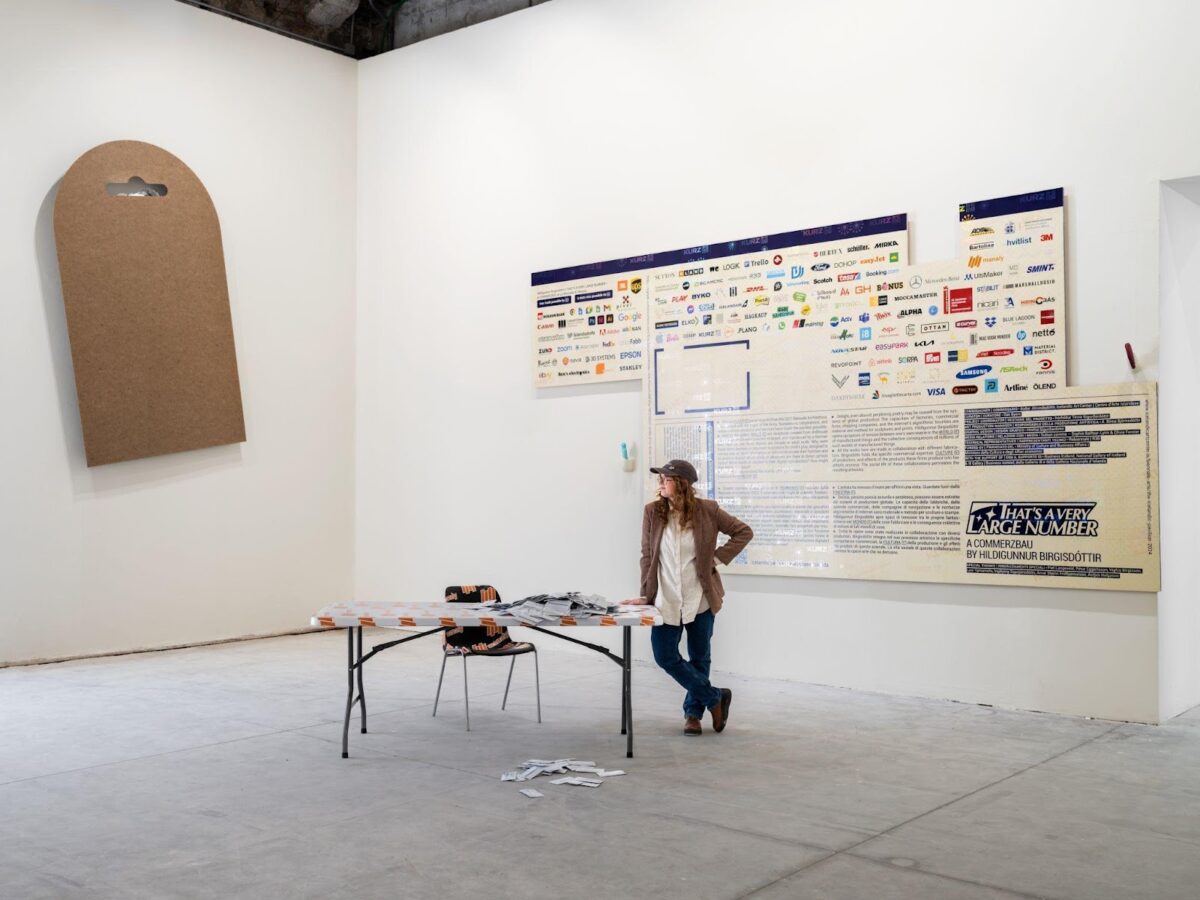
As for national pavilions in the Arsenale you can always rely on Iceland to have a bit of fun and this time artist Hildigunnur Birgisdóttir has done so by recognising our consumerist culture by covering the walls with every brand that made the pavilion possible, right down to the people who provided the tables. It also gets extra points for making its tote bags the kitschy one’s you can buy from St. Mark’s square.
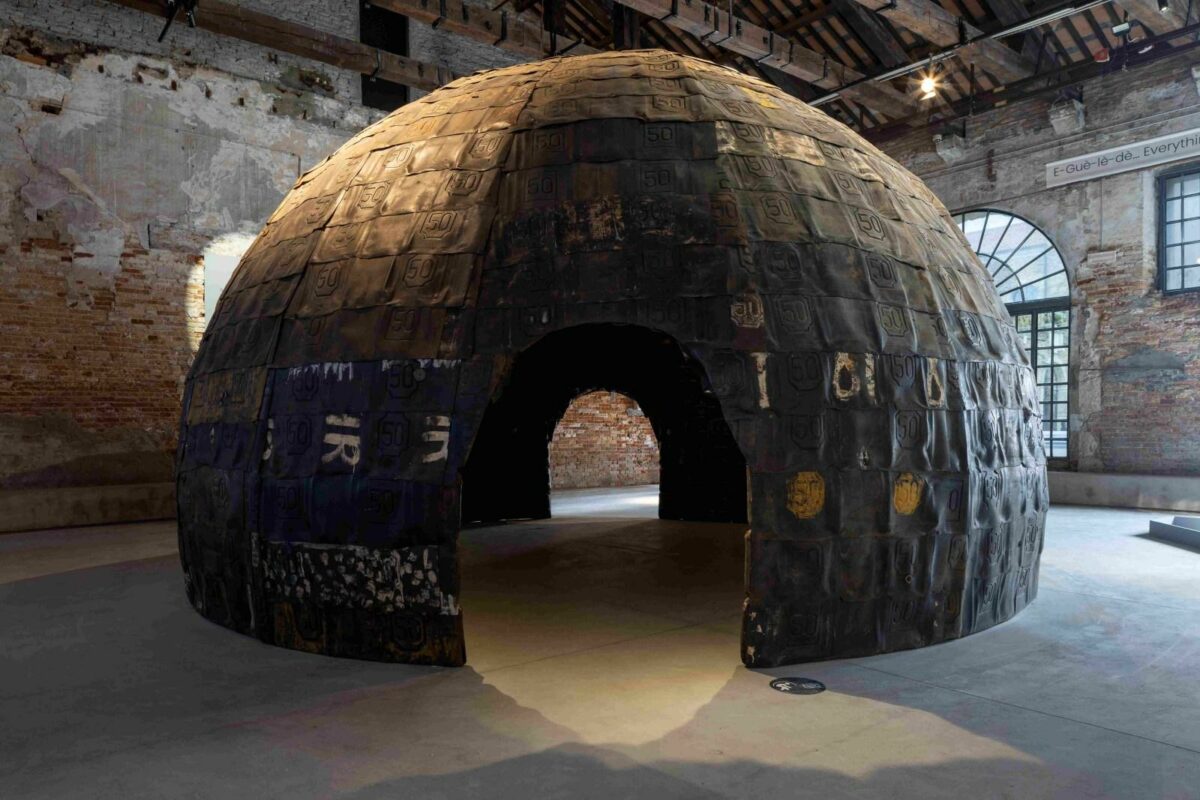
Nearby are two West African pavilions that both impressed me with Benin’s central hut made from plastic petrol cans made by Romuald Hazoumè with a sound installation inside making for a powerful immersive experience that deals with topics including spirituality and the slave trade.

Next door is Senegal’s pavilion populated with works by Alioune Diagne. A wall of painting in a distinctive style that looks pixelated shows scenes of joy and disaster covering all aspects of life that range from the socio-political to the intimate moments of daily life – with a broken boat in front drawing attention to the horrific plight of many migrants and refugees. Together, both these pavilions capture the spirit of this year’s Biennale theme of recognising we’re all one interconnected web of humanity across countries and continents.
That concludes my highlights of the two main sites and I’ll be writing about my highlights outside of the two main sites in part II.
Biennale Arte 2024 is on in Venice until 24th November. Full-price tickets start at 30 Euros for access to both sites.
Image credits in order from top to bottom: Egypt pavilion – © Wael Shawky, courtesy of Sfeir-Semler Gallery, Lisson Gallery, Lia Rumma, and Barakat Contemporary. Polish pavilion – photo: Jacopo Salvi / archiwum Zachty. German pavilion – photo: Thomas Aurin. British pavilion – portrait of John Akomfrah by Jack Hems, courtesy the artist and British Council. Spanish pavilion – photo: Oak Taylor Smith. Danish / Greenlandic pavilion – photo: Ugo Carmeni. Iceland pavilion – photo: Ugo Carmeni. Benin pavilion – photo: Jon Howard. Senegal pavilion – photo: Ugo Carmeni.
